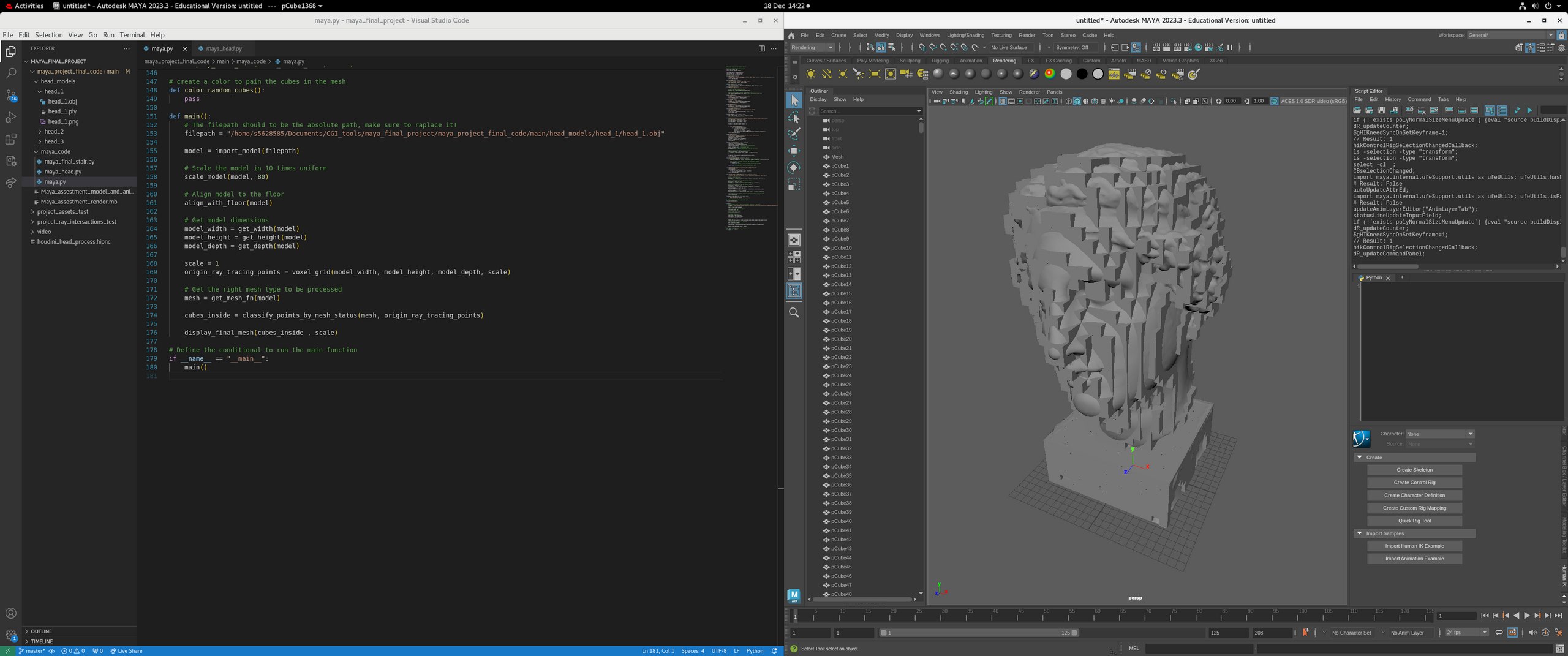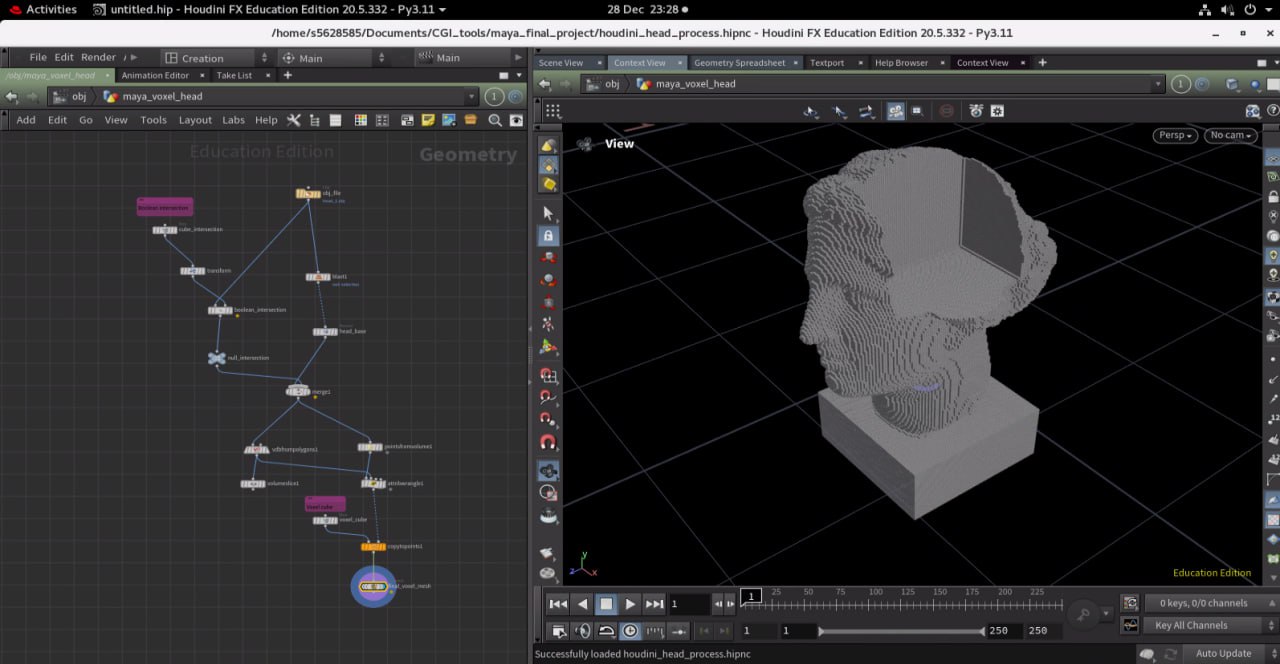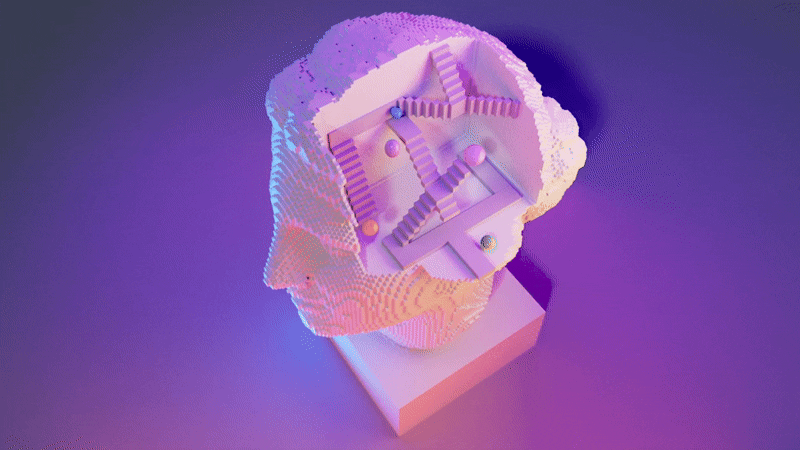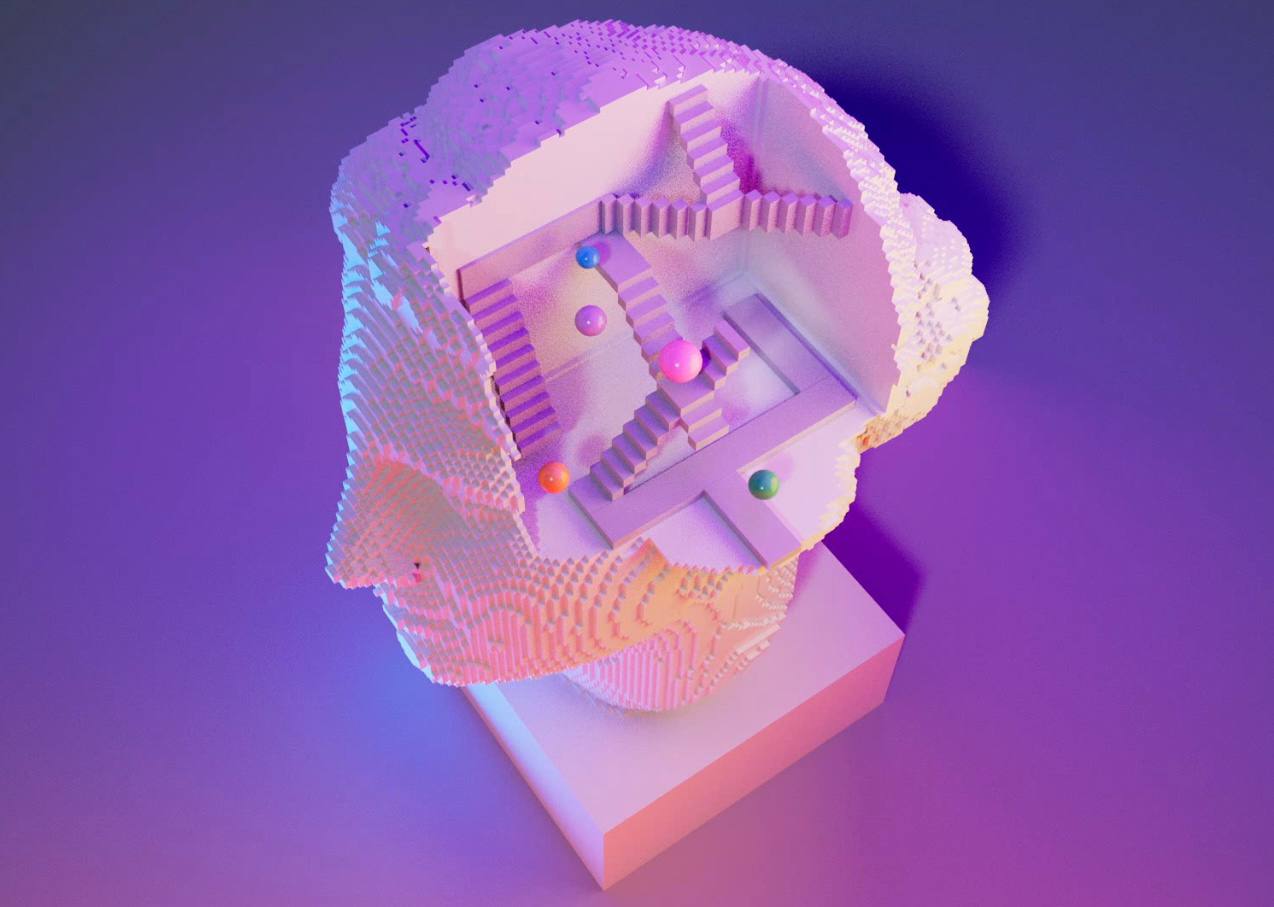The origin of ideas is a mystery that we have yet to unravel. Throughout the day, our minds can generate hundreds of ideas and thoughts, but only a few convince us to take action and bring them to life. In this project, my goal was to explore the concept of an impossible staircase and imagine ideas as small entities bouncing around the mind randomly. This is my interpretation of how ideas interact in my mind and how, in order to perceive them, we need to observe them from a specific angle to find the necessary sense and coherence, just like with an impossible staircase.
Project objetive
Create a head structure where the impossible staircases represent the complexity and paradoxes of thought, while bouncing balls symbolize fleeting ideas, thoughts, or inspiration.
Technology
- Maya: Modeling, animation, and rendering.
- Houdini: To process the mesh and voxelize.
- DaVinci Resolve: To edit and resolve color space.
- Python: First attempt to program the head voxelization effect.
Visual References
My goal with this project was to use an obj files of a human head, voxelize it and open a chunck of the head to place the imposible stairs. For the head I chose a style inspired by sculptures made from LEGO blocks, as they create an interesting contrast with the geometry of the stairs and allow for visually appealing and dynamic structures.
Production process
Modeling
For the modeling phase, I focused on creating a voxelized head model. Initially, I wrote a Python script to process the head’s OBJ file. The script extracted mesh data, created a bounding box, and evaluated whether each cube within it was inside or outside the head mesh. Cubes inside the mesh formed a Lego-style representation of the head. To determine intersections, I used Maya’s ray tracing formula, which counts intersections to pinpoint the location of a point. While the script worked, the smallest cubes I could generate were 0.5 cm3, resulting in a relatively coarse mesh. Below are some examples of the head generated using this approach.

To improve the results, I switched to Houdini, which offered better tools for managing the large number of cubes needed for a detailed voxelized head. Houdini allowed me to create a more refined and visually appealing final model, as shown in the image below.

Animation
Animating the main ball involved careful planning to ensure smooth transitions between its jumps on the steps and its movement across flat surfaces. Using the animation editor I fine-tuned the tangents of the motion graph to create a natural flow. Additionally, I applied stretch and squash effects by scaling the ball, adding dynamic and lifelike qualities to both the primary ball and the secondary balls.
Rendering
During the rendering stage, different colors and textures were tested to highlight the key elements of the project. The head is the element more relevant in the scene, so I focus in experiment with differente textures and colors. These are a couple examples of colors that I use to test.
Lighting references
To bring life to the composition, lighting played a vital role. I thought that using light to paint the sculpture with different tones could be effective, which is why lighting became the primary resource for coloring the scene without over saturating it. Neon, violet, and blue tones were inspired by the cinematic aesthetic of John Wick.
Challenges
Before starting this project, the only skill I had was programming in Python. Everything else was completely new to me, from learning Maya and its script editor to rendering, assigning textures, working with lights and editing. Below, I’ve listed some of the main challenges I faced while working on this project.
- Creating a Lego-style voxel head began with a Python script to process the OBJ file, identify mesh intersections, and generate cubes inside the mesh using Maya’s ray tracing formula. However, the 0.5 cm3 cube limit made the model coarse. Switching to Houdini resolved this by enabling higher precision and better organization, resulting in a more refined and appealing head.
- Selecting the right head model was essential, as its topology influenced the design of the stairs and the available space for placement. Testing various models helped finalize one that offered the best balance of detail and compatibility for voxelization.
- Designing stairs required careful consideration of angles and composition to align with the head model. Through multiple trials with different stair designs, I achieved a setup that fit the intended aesthetic and spatial constraints.
- Animating the ball posed challenges in ensuring smooth transitions between steps and flat surfaces. Adjustments to motion tangents and stretch-and-squash effects added realism to the movement.
- Color space mismatches during rendering required corrections in DaVinci Resolve to achieve the desired visual consistency.
Self reflection
Working on this project gave me the opportunity to fully appreciate the production process of an animated product, allowing me to face and understand the challenges that both the artistic and technical teams encounter. It also made me reflect on the importance of sharing my work and accepting criticism, which, thanks to the valuable feedback from my classmates and professor, helped me improve and become more open.

